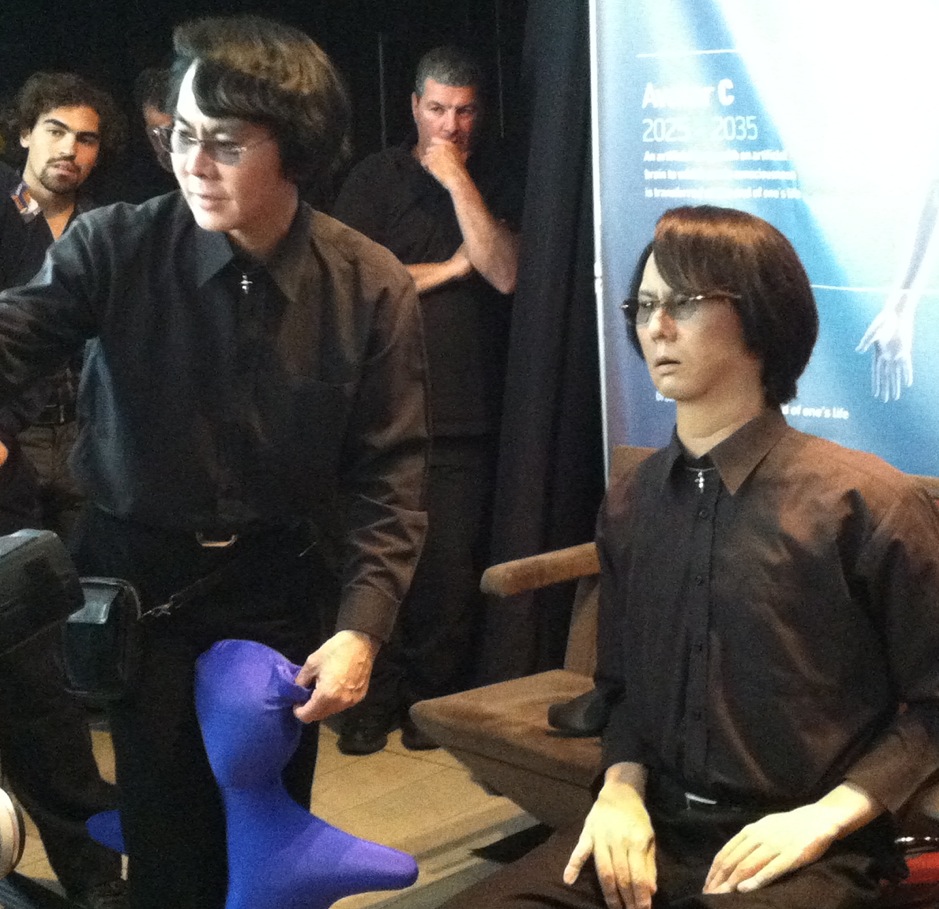Body-Double: Lifelike Android Demoed at Futuristic Conference

NEW YORK — An extremely humanlike robot made a public appearance today (June 15) here at the Global Futures 2045 International Congress, a futuristic conference focused on the technological singularity.
Japanese roboticist Hiroshi Ishiguro, director of the Intelligent Robotics Laboratory at Osaka University, Japan, described some of his efforts to develop lifelike androids. But there were two Hiroshi Ishiguros onstage: the living, breathing one and a robotic lookalike. The bot’s human resemblance was striking, even down to its tiny movements and blinking eyes.
Ishiguro has developed some impressive robots over the years. The one onstage was the "Geminoid," an android resembling a real person that was "tele-operated" — controlled remotely — by a colleague offstage. Ishiguro joked that he could use the Geminoid to give lectures in his stead. People could easily accept the android as his own body, Ishiguro said. [5 Reasons to Fear Robots]
Ishiguro has also developed another Geminoid, this one a fashionably dressed female android, which he has shown off in the windows of clothing stores. The robot was so popular that the clothing it was modeling sold out immediately, Ishiguro said.
Ishiguro has also taken his robots on the road as part of a traveling "android theater," where they act out scenes with humanlike expressions. Ishiguro's theater even played in a church once, where the audience likened a female bot to a martyr. After realizing his robots were too perfect — "more humanlike than humans," as he put it — Ishiguro began to make the bots slightly more flawed. (His body-double, for instance, wears a constant, slight scowl.)
The talented roboticist also made the "Telenoid," a pillowlike bot deliberately designed to appear ageless and genderless so that people can project an imagined face onto its neutral appearance. Ishiguro has tested the Telenoid among the elderly in Denmark, who took to it very well, he said.
Another of Ishiguro's inventions is the "Elfoid" — a smaller version of the Telenoid that functions as a mobile phone. Today, everyone talks to the "little black boxes" of their smartphones, Ishiguro said, so he wanted to personalize and humanize the devices.
Sign up for the Live Science daily newsletter now
Get the world’s most fascinating discoveries delivered straight to your inbox.
Collectively, Ishiguro's work pushes the boundaries of what he called "trans humanity," where the line between humans and technology disappears. After all, he asked, what is a human?
At the end of Ishiguro's talk, his robotic likeness spoke up, saying that next time, it would give a much better presentation than the real Ishiguro.
Follow Tanya Lewis on Twitter and Google+. Follow us @livescience, Facebook & Google+. Original article on LiveScience.com.










